Final Fantasy VII was the first game I bought for my original Playstation. In fact, it was the reason I bought the console. Like so many others, it was my initial exposure to the Final Fantasy series and to the JRPG genre as a whole and I instantly fell in love with both. There’s an odd sense of history repeating itself then, now that I find myself having bought a PS4 specifically to play Final Fantasy VII Remake. I must admit, when the game was first announced back in 2015, I was initially skeptical.
Over the years we’ve seen a handful of attempts to revisit the world of Midgar, from the animated movie Advent Children, to video-game spin-offs such as Dirge of Cerberus and Crisis Core. Despite all being decent efforts, none have managed to add anything worthwhile to the original game’s legacy. As such, despite the surrounding hype, I had limited expectations for the remake. That was until June 2019 when we were finally able to see footage of the game in action, and my excitement went through the roof.
Now, 9 months later, I’ve been able to play the first few hours of the game for myself and I can’t help but marvel at how far video-games have come.
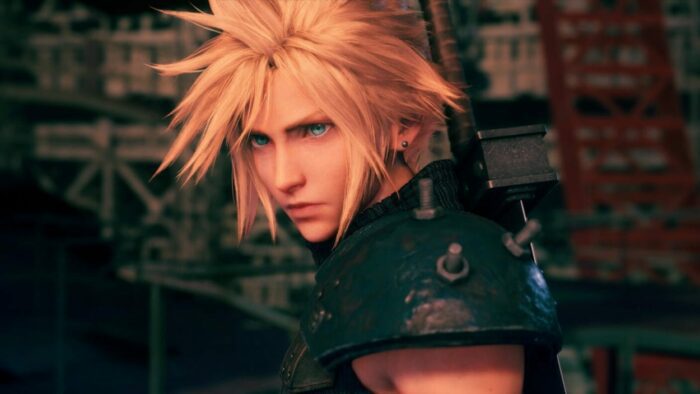
Graphics and Presentation
It’s almost redundant to talk about graphics in big budget games these days; everything looks incredible and Final Fantasy VII Remake is certainly no exception. The character models for the main cast are fantastically realistic in both cutscenes and gameplay. Whether it’s Cloud’s skin pores and faint freckles, Barrett’s facial scars, or Tifa’s glistening red-brown eyes, everything looks photo-realistic—despite the anime style character designs.
Midgar itself has also been brought to life with stunning detail. In the 1997 original we were only given a glimpse of the world through cutscenes and static, pre-rendered backgrounds. Here we see the dystopian city fully realised.
Being able to see the intimidating scale of the reactor is a thrill in the opening bombing mission, as are the sights and sounds of the bustling streets of Sector 8 where the party make their escape. Here I was reminded a little of the retro-futuristic charm of the 2001 anime Metropolis, as we see stylish 40s and 50s style trucks, cars and buildings surrounded by a stark, industrial framework. It’s a glorious clash of styles that makes Midgar such a compelling setting.
Every environment makes great use of lighting, from the cold fluorescent lights of the reactor, to the warm and dimly lit streets of Sector 8. In battles, sparks fly and elemental attacks bounce off of the characters and scenery.
The only nit-pick I have in terms of presentation is that NPCs in the game look noticeably lower in detail than the main characters. It’s not necessarily surprising but I found it uncomfortably noticeable. It’s not a problem with the many inhabitants of Midgar who essentially just act as scenery with a line of dialogue, but with shop keepers and quest givers it’s a little jarring.
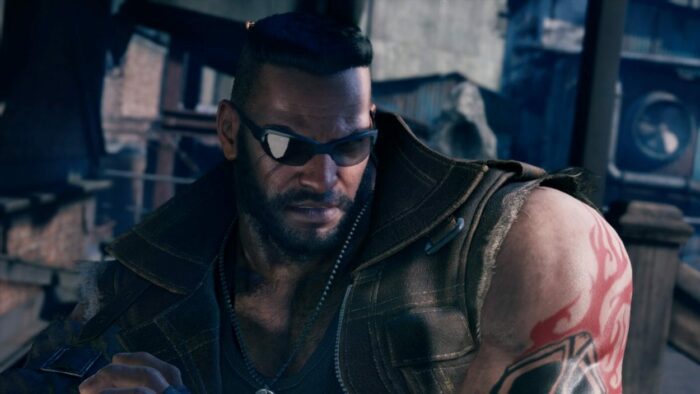
Sound and Music
Final Fantasy VII’s soundtrack is amongst the most iconic and revered in gaming and here it sounds better than ever. Gone are the midi instruments of old and in their place are breath-taking orchestral rearrangements.
The battle theme is one of the standout arrangements for me so far. Bombastic, stabbing horn sections accentuate the driving and sweeping strings. It’s absolutely thrilling to listen to and is indicative of the love, care and attention Nobuo Uematsu and co. have put into making the remake sound as good as it looks.
The game is fully voice-acted and is probably best described as something of a mixed bag. The dialogue in Final Fantasy VII was always going to be a tough thing to perform well. The characters are larger than life, and plot is often ridiculous and as a result the acting can come across as hammy and awkward. Once again, I feel like the main cast are all generally excellent whilst the lesser characters and NPCs are noticeably worse.
There is an option for Japanese audio, so for those who find it too off-putting there is an alternative. I’m normally very sensitive to voice-acting in video-games but so far, I’m finding the good outweighs the bad enough to keep me from switching.
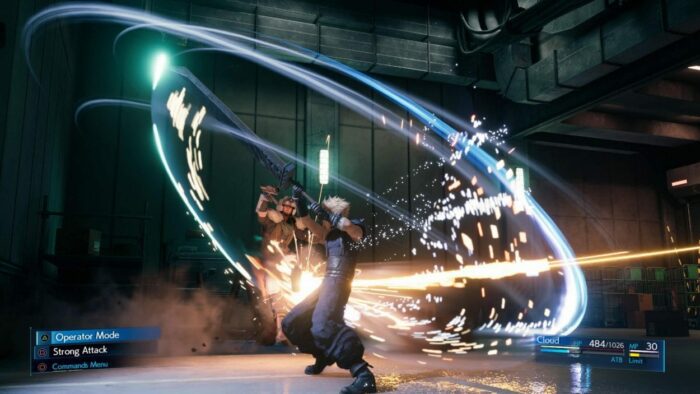
Combat
Perhaps the biggest departure from the original is in the game’s combat. The turn-based combat has been almost completely scrapped in favour of a more action-based style. Random encounters are (thankfully) gone, and battles are triggered when Cloud moves into the proximity of an enemy. At this point Cloud and any other members of the party draw their weapons.
The battles are fought in real-time and the player has control over one party member at a time. Standard attacks must be performed manually by repeatedly pressing the square button and doing so will fill the ATB (Active Time Battle) gauge. When the ATB gauge is full, the player can pause the action to select a more powerful attack, cast magic or use an item. Care must be taken however as powerful enemy attacks can interrupt and consequently waste the action.
The player is also able to block and dodge in real time with R1 and circle respectively though with my short time with the game I’m finding it hard to make reliable use of either. Incoming enemy attacks have very little in the way of visual clues and so feel somewhat unpredictable. Perhaps I’m missing something but, so far, I’ve been focusing mostly on offence without any trouble.
The player can give orders to the other members of the party when their ATB gauge is full. It’s the closest the game ever feels to being turn-based and gives a welcome tactical depth to the otherwise action orientated combat. You can also switch control to another character in the party by pressing left or right on the d-pad.
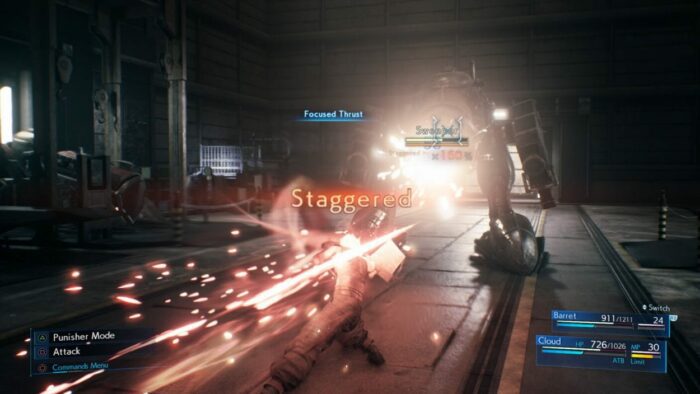
The Worst of both Worlds?
Overall, I have mixed feelings on the combat so far. In general, I think it works reasonably well but for me, the feel isn’t there yet and as a result I’m finding it a little underwhelming. It certainly looks spectacular in action—seeing Cloud slicing and dicing with the Buster Sword is a joy—but I feel somewhat disconnected from it.
Action games like Bayonetta or Devil May Cry allow the player to instantly react to incoming threats and perform combinations on a whim. Final Fantasy VII Remake’s combat feels somewhat lethargic in comparison. It might seem an unfair comparison to make, and to a certain extent it is, but I can’t help but feel like Final Fantasy VII Remake’s turn-based/action hybrid combat is the worst of both worlds.
I’ve also been having occasional issues with the camera in battles. Sometimes it will get caught on a wall and zoom in, obscuring and disorientating the action. It’s not a huge problem but it can be annoying.
I suspect that with a little more time to get a feel for the nuances of combat I will grow to enjoy it more, but only time will tell. Failing that, there is an option for a less hands on approach in classic mode. Here the player only needs to worry about ATB commands with attacking, blocking and dodging being handled automatically.
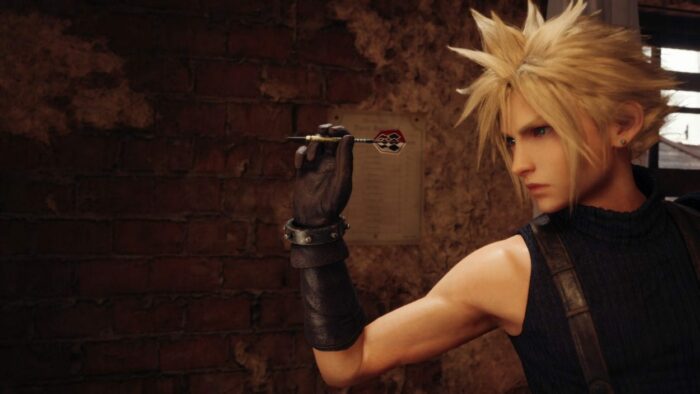
Remake or Re-imagining?
My play-through has now taken me as far as the slums below Sector 7, and it’s here that I’ve been most surprised by the extent in which the world has been expanded.
Whereas the slums were a relatively insignificant part of the original game, they have now been expanded into a web of ramshackle alleyways bustling with life. Here the player can tackle a host of side quests for the impoverished inhabitants from reuniting a little girl with her pet cats, to exterminating mutant rats. In Tifa’s bar, Cloud can play a game of darts or put on Final Fantasy VII themes (which can be found and bought from NPCs) on the jukebox.
This section of the game put me in mind of another late 90s classic: Shenmue. I’m sure some will see these diversions as padding, but they are mostly optional. For those that want a longer experience I think they will prove a welcome addition.
Remake is quite a vague term when it comes to video-games. Sometimes it can be a graphical overhaul, a modernisation in gameplay or controls, and sometimes it can be a complete re-imagining. Suffice it to say, Final Fantasy VII Remake is certainly in the latter category.
It’s a completely fresh experience for long-term fans of the original and newcomers alike. Though the plot, characters, and settings are all familiar, it’s a bold revisit to the ground-breaking game that so many of us fell in love with. Like all the best remakes, it doesn’t seek to replace the original, but to join its legacy.

